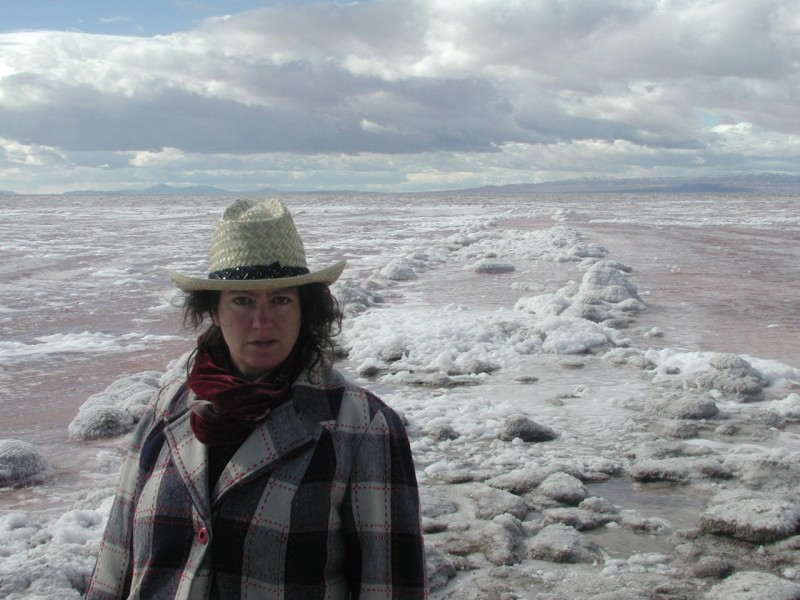Anya Gallaccio (b.1963, Paisley) lives and works in London and San Diego. After studying at Kingston Polytechnic (1984-85) and Goldsmiths College, University of London (1985-1988), she came to public attention in the late 1980s as one of the artists exhibited in the Freeze exhibitions curated by Damien Hirst. Since then, she has had solo presentations in the U.K. and abroad including the Duveen Galleries at Tate Britain, Museum of Contemporary Art San Diego, National Galleries of Scotland, and Turner Contemporary in Margate. Gallaccio was nominated for the Turner Prize in 2003; she is a Professor Emerita in the Department of Visual Arts at the University of California, San Diego.
Gallaccio employs organic materials including flowers, fruit, ice, salt, and grass to create site-specific installations that invite processes of transformation or decay. The end states of her installations are hard to predict. A beautiful colour field of flowers decompose over the course of an exhibition, candles burn, and apples rot. Gallaccio’s concerns with duration and chance are central to her process. The evolving nature of her installations makes them difficult to document, challenging the traditional notion that an art object should be a monument within a museum or gallery, or that beauty is permanent. Instead, her work often lives through the memory of those that saw and experienced it – or the concept of the work itself.
In 1996 she displayed a vast block of ice in a disused pumping station in East London (intensities and surfaces, 1996). Over time, a core of rock salt slowly eroded the ice from the inside out. She has said: “I see my works as being a performance and a collaboration ... There is an unpredictability in the materials and collaborations I get involved in. Making a piece of work becomes about chance—not just imposing will on something, but acknowledging its inherent qualities.”
Gallaccio often works in sites that have a rich history, to which her installations respond. At Compton Verney Gallaccio created repens (2000), a pattern inspired by a ceiling decoration from the interior of the Robert Adam designed house which she recreated in the grass cutting of the lawn. Whereas Adam brought elements of the natural environment into his interiors, Gallaccio reverses this logic: transferring the interior design into the landscape and allowing the pattern to disappear as the grass grew.
Gallaccio's materials are not always ephemeral. Some pursue an unlikely permanence rendering organic objects in a more enduring form, such as a series of life-size bronze trees laden with shiny ceramic apples. Gallaccio has sited these works both indoors and outside in the landscape, mimicking the process by which humans continually transform and manipulate their natural surroundings.
Most recently her series of works entitled beautiful minds (2015-24) extends this exploration of permanence and her interest in the collision of the organic and the man-made. Consisting of a giant three-dimensional clay printing machine that Gallaccio programmes to print a new object over the course of each exhibition. Typically choosing vast natural geological formations that are digitally scanned, each scaled print is subject to the unpredictability of the wet clay and the imprecision of the printer. Once complete, the clay is recycled.
In 2025 Gallaccio was chosen to create a new memorial to the victims of the AIDS/HIV pandemic. This will be sited in central London and unveiled in 2027.

